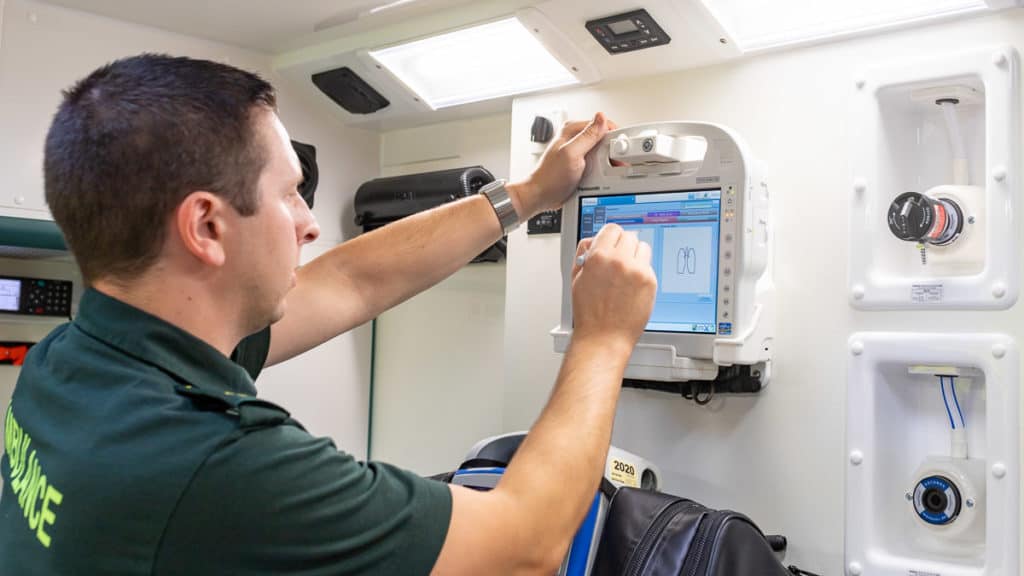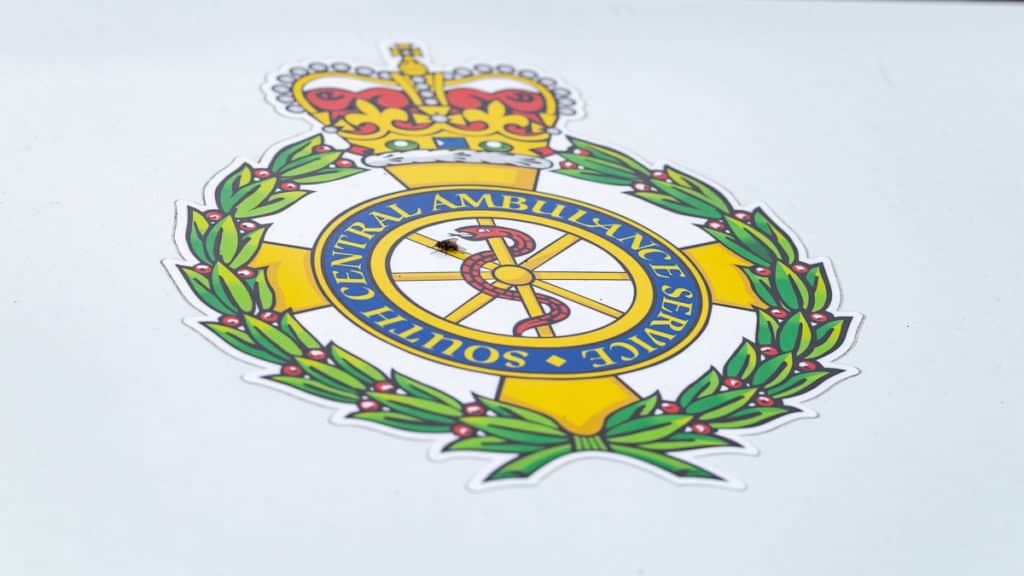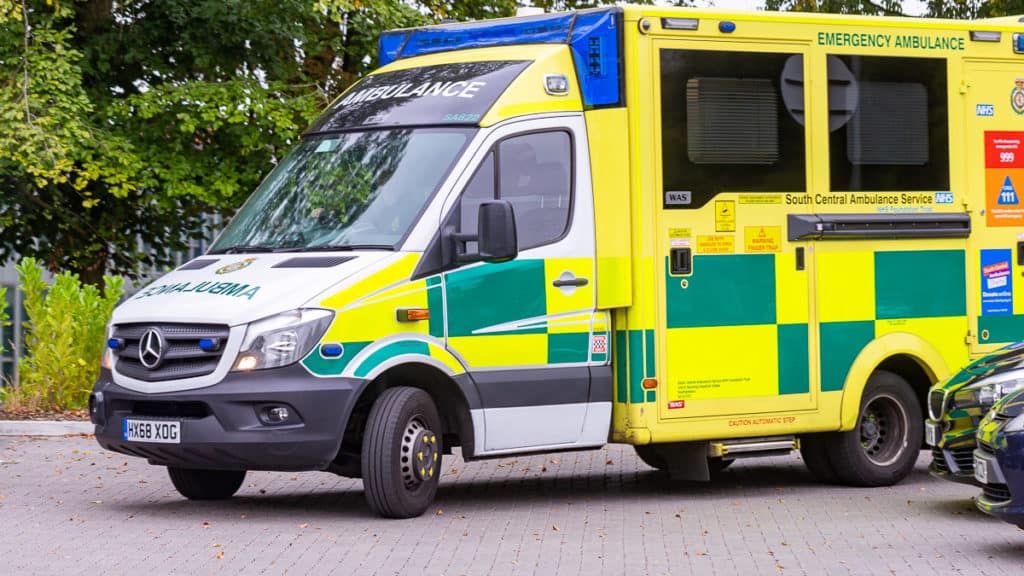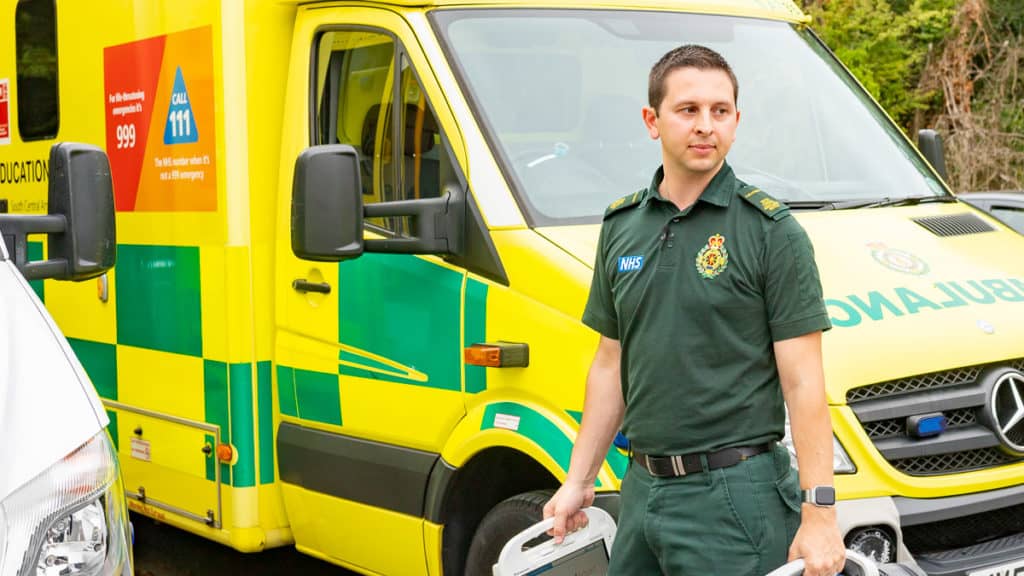Perhaps many people think like I did a couple of weeks ago, that the main benefit of moving from paper to digital patient records in an ambulance is that it saves time when handing over the patient to the hospital. Or that it reduces the risk of papers and information getting lost. Actually, using electronic records has another large benefit: the data from the electronic patient records, ePR, can be collected and analysed in large chunks by people with clinical knowledge. The results can be really useful, not only for the management of the ambulance service, but for other organisations as well.

Interesting uses of big data from ePR
In the UK the South Central Ambulance Service has started some very interesting work in this area. Specialists are collecting and analysing big data from ePR. The results have already changed how they allocate their resources. They have also started sharing some of the results with police, local council and other bodies.
In this article I will describe a few of the interesting facts that I picked up listening to people working at the South Central Ambulance Service or SCAS in the UK. I got so fascinated that I want to share it with colleagues and others that might find it equally interesting.
South Central Ambulance Service, SCAS
SCAS is a large Trust that covers an area containing 22 main ‘Acute’ hospitals, serving a population of 4 million people (plus an additional 3 million people in other areas for their non-emergency Patient Transport Service). They cover both rural areas and large cities like Southampton and Portsmouth.
SCAS handle a lot of 999 and 111 calls every year. Some of the callers are treated over the phone or advised to visit their GP but 500,000 or so every year receive a visit from an ambulance. They have two headquarters, both of which contain 999 (emergency) and 111 (urgent) call centres. The rationale behind that is that if one fails, the other can continue to provide emergency ambulance services. The southern one is in Otterbourne and that is the one we visited.
Want to know more about SCAS? Head over to their website.

So far SCAS has ePR data from 1.5 million 999 calls
SCAS has used ePR since 2016 which means that they have 3 years of data or roughly 1,5 million 999 calls. That is a lot of data! Looking at the statistics, there is a significant bump in some traumas when they started with ePR. This is thought to be the results of more accurate reporting, not an increase in actual traumas.
One reason that the reports are more accurate today is that they are based on the assessment of patients done by paramedics. Before the ePR, the analysts had to make do with the data from the 999 calls, which means the diagnose was based on information from the caller. The callers are members of the public and usually not trained in diagnosis. A caller might request an ambulance because of a collapse, but when paramedics arrived, the patient wasn’t suffering from a stroke but a fall.

Access to patient’s previous record
Another benefit with ePR is the ability for the paramedic to access the patient’s previous record. This means the paramedics doesn’t have to start blind. They can compare the patient’s data with previous measurements of the same patient, for example: “Is this ECG normal for this patient?” rather than “is it normal compared to people in general?“. This is useful when making the decision if the patient should be transported to the hospital or not. It has facilitated the reduction of trips to the hospitals, something that is particularly good for fragile patients with chronic illnesses or weak immune systems. 40% of the patients are treated at home nowadays. The ambulances are not a transport service moving patients to hospitals, it brings clinical care to the patients.

Quicker to fill in information with ePR
Not all of the paramedics were thrilled when the ePR was introduced at SCAS. Some hated the ePR back then and thought it was time consuming. Today, no one wants to return to paper as they find it much quicker to fill in the ePR than the old paper forms. There are for example less text areas and more pre-filled boxes in the ePR.
The paramedics can also pre-alert the relevant department at the hospital that they are on their way with a patient suffering from stroke or heart attack. This improves the patient flow. The hospital also receives the information about the treatment given by the paramedics.

Big data can prove ideas right or wrong
Let’s move on to the most interesting part where the data from the ePR can be used for planning. SCAS use data to track the major causes of trauma, when they happen and where
For example most traffic accidents take place during commuter time with peaks on Wednesdays around 8am and Fridays between 1pm and 7pm. The ones on Fridays are in general more serious (so avoid travelling then if you can) The business analysts can also find out where the hot spots for road accidents, stabbings, suicides, falls, strokes and other major traumas are, which means they can place ambulances in appropriate locations to improve response times. This type of data is also of interest for the police and other local authorities for preventive actions
At the moment SCAS are looking at the statistics for drowning. The more information they can get concerning previous accidents, the better they can make sure that staff working in those areas and shifts, have the right training.
Some of the results comes as no surprise. For example more children fall out of open windows in the summer than during winter. And I don’t think anyone will be surprised to hear that big data proves that a common reason for trauma in older women are falls of different kinds. These results were expected, but now SCAS have it in black and white. Other findings are more surprising. For example, one of the hot spots for stabbing was an area not previously known for troubles.
There is no end of what this data can be used for in the future. For example, some paramedics would really like to get feedback on how patients did. What happened to that patient with the stroke? Things like that.

Isn’t it fascinating what you can do with big data? I think so anyway and wanted to share it. The information in this text was gathered by listening to Mark Ainsworth-Smith, Jemma Williams and Tom Roe. All of them employees of SCAS. Any faults in the text are my own. Thanks to SCAS for sharing this information and thank you for reading.
Kristina Svensson
